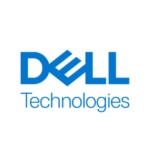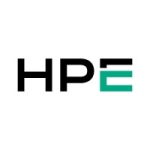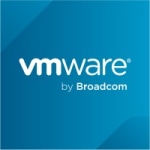What is our primary use case?
Our usage of Nutanix Acropolis AOS focuses on normal workloads for OSS-related applications of our operations support systems, e.g. customer facing systems, DNS, DHCP, and DPEs. The word we mention to our customers that describes this technology is OSS (Open source software). This is not 5G.
What is most valuable?
One of the good features of Nutanix Acropolis AOS is the Prism Central. It's a well-designed system. It's a central installation and management tool for more than one cluster. If you have several clusters crossing Europe, you'll have a very fancy, smart, and tiny tool to orchestrate this.
Another feature I find valuable in Nutanix Acropolis AOS is technical, e.g. the rebuild time from the resynchronization between the clusters is fast. If you have an outage caused by a disk failure or a server failure, the system works well and is very fast, because the technology of Nutanix Acropolis AOS is even better than other systems. The system works faster than others.
Whether this system is worth the money will really depend on your goal, on what you want to achieve. The flexibility of Nutanix is very, very good. You have the freedom to use any kind of major vendor, to use it for a hyperconverged installation.
You have the Acropolis hypervisor based on KVM, e.g. the Kubernetes virtual machine. You can also use OpenStack. The system also supports VMware and Microsoft Azure. It also has integration with a hybrid cloud, e.g. AWS. There's also a good integration between the system and Google GCP Cloud. Nutanix Acropolis AOS has finesse. It's very, very good.
What needs improvement?
The look and feel of the web GUI of Nutanix Acropolis AOS needs improvement, when compared to other systems, e.g. VMware Orchestrator. For example, finding important features of the system should be easier. The features should be made more visible and easier to find, rather than having to figure them out and reconfigure them.
Another area from improvement for the system is hardware integration. I had some issues with the integration with the hardware vendor, in particular, Dell. The integration was really tricky, but the reason could be between the two vendors: Nutanix and Dell, because they have different life cycles for the deployment. The integration issue could be because of the hardware, firmware of Dell, and Dell had a different life cycle for the renewal of an update of the firmware, for the servers like Nutanix. We also had some issues with some Dell-related drivers, and that consumed a lot of time.
A one-touch system for integration could be an improvement. Having a one-touch update is also a very good idea. For example, you'll just need to push the button for the system to be updated automatically, e.g. for updating the firmware, hardware, disk, etc.
Nutanix Acropolis AOS which was integrated with Dell was not running well. What was running well was less than 50%, and the other updates have failed because of issues between the firmware, the server, and the system. This is why hardware integration with this system needs improvement.
For how long have I used the solution?
I started using Nutanix Acropolis AOS in 2017, so the total number of years I've been using it is five.
What do I think about the stability of the solution?
I find Nutanix Acropolis AOS stable. In the beginning, we had some issues with its stability, but now, stability for it is good.
What do I think about the scalability of the solution?
The system is very scalable. It's similar to vSAN, but vSAN is a well-known, major vendor for virtualization, while Nutanix Acropolis AOS is better in terms of technical features.
How are customer service and support?
Technical support for Nutanix Acropolis AOS was very good. Their engineers have very good skills, e.g. in every case, they will try to solve an issue.
Technical support from Nutanix was better than VMware technical support. VMware was also very good, but the Nutanix support team had more initiative. Nutanix takes more care of the open tickets. I'm giving them a thumbs up as they're good.
What about the implementation team?
I was involved in the deployment process for Nutanix Acropolis AOS. The system is working okay. It's good. The deployment the first time was a bit tricky, but we had good support from our vendor. I was able to run the installation by myself, with some support. You have to do some preparation for the installation to be good.
What's my experience with pricing, setup cost, and licensing?
You have two Nutanix Acropolis AOS license models. One model is coupled with the hardware appliance, e.g. it's the appliance approach, depending on the vendor: HP, Dell, and Supermicro carry these appliance permit licenses. The other model is the software only model.
We had the first model that was coupled with the hardware from a vendor. For Nutanix Acropolis AOS itself, the pricing was okay, especially because of its features and how you can use it for a lot of hypervisor technologies. The cost, however, when coupled with the hardware vendor was high.
On our project, the renewal was from the hardware vendor and it was expensive. The software was okay, e.g. it had normal pricing.
You can choose to pay the license yearly, or you can pay every three years, or every five years. It depends on how deep your pocket is.
Which other solutions did I evaluate?
What other advice do I have?
Nutanix Acropolis AOS is deployed on hardware, without a layer in between. It's server hardware installed.
Nutanix Acropolis AOS was good, e.g. from its performance running faster than VMware ESXi on a vSAN, so I'm rating it an eight out of ten.
Disclosure: My company does not have a business relationship with this vendor other than being a customer.
















